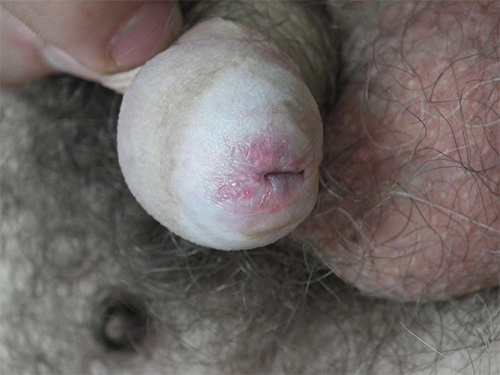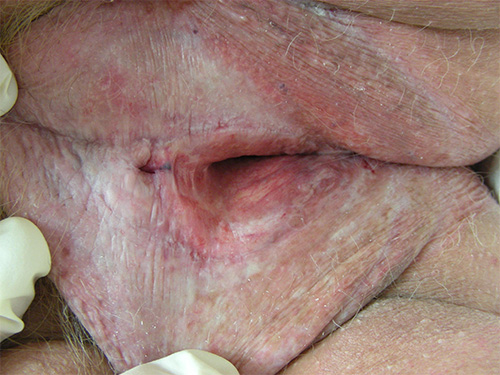Presentation of lichen sclerosus
Lichen sclerosus is an uncommon skin condition; however, it is one of the more common causes of chronic genital skin disease. Lichen sclerosus mainly affects the genital area; extragenital involvement is reported in 6 to 20% of patientsKirtschig, 2016.
Lichen sclerosus presents as a well-defined, white, finely wrinkled plaque. The plaque often has purpuric areas, and hyperkeratotic fissured areas that are ulcerated from scratching. In females, any part of the external genital and perianal area may be involved, but the vagina is spared. Often the whole vulval and perianal area is involved and described as a ‘figure of eight’. In males, lichen sclerosus is usually confined to the glans penis. See here for photos of lichen sclerosus.
The condition is typically very itchy, but can also be asymptomatic (eg may only be noticed during a cervical screening test). Occasionally, the patient presents with pain and dyspareunia. In addition to itch, children can present with constipation or dysuriaEllis, 2015—consider lichen sclerosus as a cause of unexplained urinary tract or gastrointestinal abnormalities in children. The signs of lichen sclerosus can be mistaken for sexual abuse.
Lichen sclerosus affects all ages, but is less common in children. Incidence of lichen sclerosus peaks before puberty, after menopause, and between 30 and 50 years of age (in males). In adults, it is more common in females than in males, but in children, it is more common in males than in femalesBalakirski, 2020.
In females, lichen sclerosus is strongly associated with autoimmune disease, most commonly thyroid disease, alopecia areata, vitiligo and pernicious anaemia. Given the high incidence of lichen sclerosus in postmenopausal females, a pathogenic role of reduced estrogen levels has been suggested, but the protective effect of estrogen in premenopausal females has not been observedChi, 2011.
In males, lichen sclerosus may be caused by occlusion and skin contact with urine because it is more commonly seen in those who are uncircumcised.


